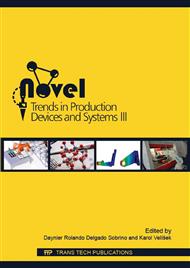p.262
p.270
p.278
p.288
p.298
p.307
p.316
p.324
p.334
Modeling the Failure Tree Analysis for Safety-Critical Systems in the Production of Hazardous Materials
Abstract:
During a manufacturing process of automotive clutch an explosive substance – xenon is produced. Concentration of this substance must be monitored. Implementation of controls is performed by a safety-critical functions control system.Among main role during the process of risk assessment analysis belong determination of danger and dangerous events associated with the devices. Proactive planning errors and the use of appropriate standards can greatly reduce formation disorders thereby reducing the probability of dangerous consequences. The standard safety subsystems architectures and computation methods for determining the failure intensity is listed in the standards IEC 61508 and IEC 61511. These standards contain information tables with the results of these computations for selected parameter values.We propose a complete failure probability model for the safety functions of the control system. This model is designed to compute the intensity of the critical failure for the standard channel architectures.These architectures were designed with respect to the standard IEC 61508 and were implemented in Matlab.
Info:
Periodical:
Pages:
307-315
Citation:
Online since:
August 2016
Authors:
Price:
Сopyright:
© 2016 Trans Tech Publications Ltd. All Rights Reserved
Share:
Citation:


